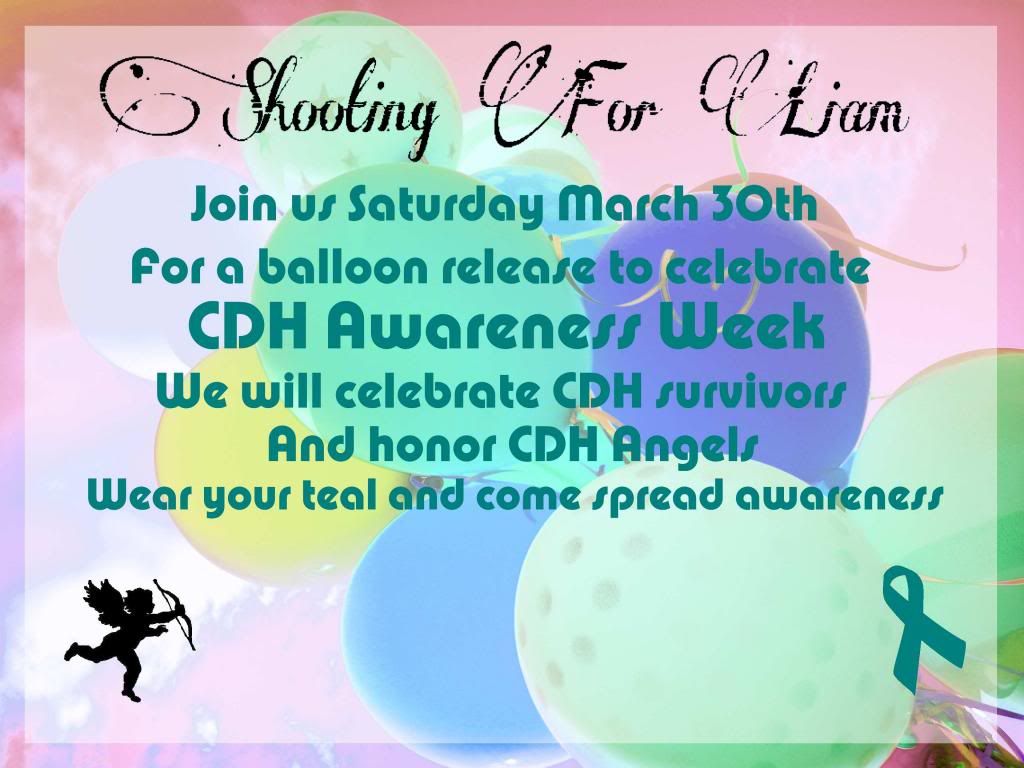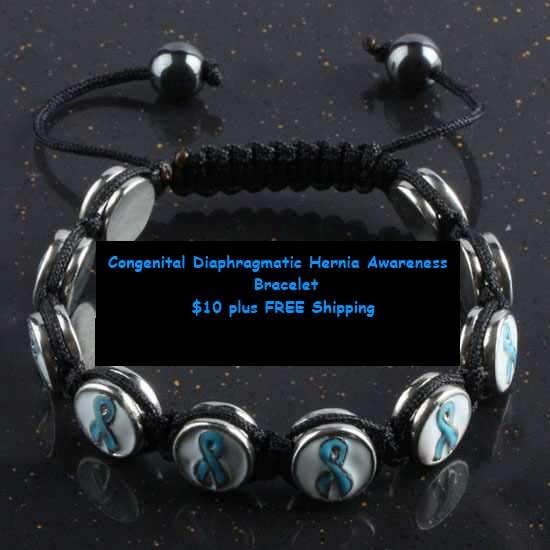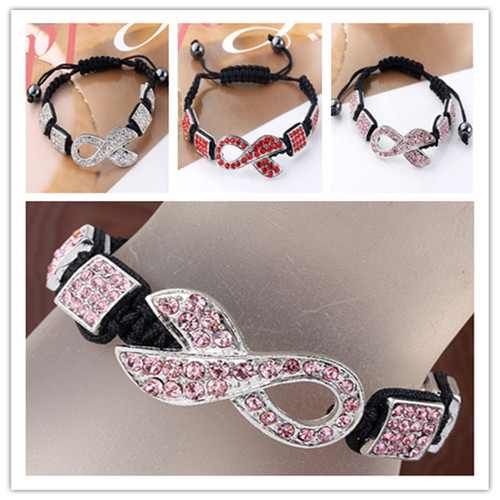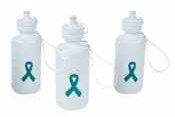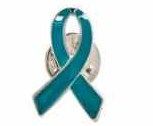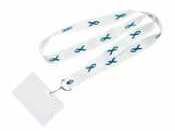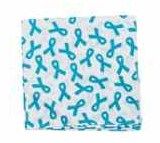What to expect when your expecting...A CDHer and Questions that we've been asked........
Weather your expecting a CDHer or taken by suprise when you give birth to one, the very first important bit of advice I can give you is....
Don't campare your baby to another because theres nothing to say one baby is going to better than another based on the size of their defect. In some cases babies with bigger defects have done better than those with smaller defect, but that isnt always the case ofcourse.
No two babies are the same, and no two treatments are the same.
Treatments can and usually are very similar but things change depending on each baby.
That all depends on your baby because every CDHer is different.
I had a nurse at UCSF tell me the shortest time they saw a CDHer stay in their NICU was 4 weeks.
But CDHers can stay for months and on tough cases possibly years.
While your sitting there at your babies side don't stress over how long you and your child are going to be there, but instead celebrate the milestones because I can promise you there will be many.
Celebrate the good blood gases.
It's the little things that will get you through your days.
Do I need to get rid of my animals because of my baby being born with CDH?
This is a question I see asked alot on many sites.
Our NICU nurses and Doctors as well as our Doctors and specialist at Childrens hospital told us that no we did NOT have to get rid of our animals because our son Liam was born with CDH.
Infact they said that growing up with animals, instead of sheltering them would decrease their chances of being allergic to the animals later on in life.
As long as our son didn't have any allergic reactions to our cats we were cleared to keep them.
Of course we kept the cats away from him when he was a baby because cats hair can get into the babies nose and end up suffocating them. We also made sure to vaccume on a daily basis to help keep cat hair and dander down. Keeping your animals brushed and bathed reqularly can help.
Liam is 21 months and has Chronic Lung Disease and we had two cats at the time (1 as of a year ago) and he had no problems. Now he even pets our cat. Their very close actually. We also have an outside rabbit and an outside dog. Liam will sit at the back screen door and play with the dog through the screen. The only reason The dont get to play together except once is because the dog is a jumper and I don't want Liam hurt. Liams Uncle and Tia have a inside/outside cat and outside dog and he's also good with those animal. No respitory problems after being around them or allergy issues. Their dog is a chow and has really thick long hair too and its not a problem.
Every case is different and it doesn't hurt to ask your doctors. The Pulmonologist and the CDH specialist would probably be the best to ask. Keep in mind each doctor does things differently so just because we were told it was ok to keep our animals doesnt neccessarily mean you'll get the same answer.
I know many CDH families who have animals and only one that I have followed had to keep their animals away from their child and slowly introduce the animals back into the home after the baby got older.
Animals and tubing:
Weather feeding tube or oxygen or any other tunes and wires the main thing you need to watch with animals is that they like to play with it. Any sudden movement in tubing can rile up a cat and make them think its a play toy. With dogs, watch for the chewing on tubing. One time we let the dog in the house and Liam was in the livingroom and I cought the dog with the feeding oxygen tubing in his mouth. That was the last time he
was allowed in the house.
What should I pack for my baby?
Its hard to know what to pack when you don't know what to expect. My son was at UCSF a hospital 4 hours away from home in a city I knew nothing about. I didn't know what to expect or what to pack so I ended up packing alot of things that I had to send back home with my husband.
When a baby is in NICU theres no alot of things they can use or need at first.
They allow your baby to wear socks, mittens, diaper and sometimes a hat.
Tip: socks work way better than mittens on their little hands and because socks are longer they can be
pulled up to cover most the babies arm to help keep them warm.
They usually always allow a small stuffed animal to stay at their bedside.
As your baby is allowed to wake up and gets moved to a crib they'll need toys and things to help stimulate their minds like:
Crib mirror, mobile, toys that can be hung on the side of the crib.
We hung a bright colored blanket that have dinosuars and was very colorful on the side of our sons crib for stimulation. It also sort of seperated him from the rest of NICU by doing this.
By the time they get into a reqular crib they will be allowed to wear clothing.
Onsies and tshirts are the best because then the nurses can still access everything without having to undress the baby. You'll also be able to bring in babies own blankets too.
If your like me staying a long way away from home,
id recommend packing your baby atleast 12 pairs of socks because they'll be used on their hands as well and you dont want to have to be doing laundry all the time. I know Liam went through atleast 12 pairs of socks a week. You'll only need 2 maybe 3 hats to start off with.
Tips on what to pack for yourself:
Besides the normal clothes and toiletries I suggest a device that can go online:
Ipod, Kindle, mini Computer.
You'll want something you can use to keep your family and friends updated on your sweet baby. Blogging and opening and starting a FB page for your little one are good ideas.
You'll want to take pictures daily but beware of using the flash. There are alot of babies in NICU and all need to rest and be undisturbed and a flash can bother them, including your baby.
A book is always great to keep with you, or if your divice reads ebooks thats even better.
If your not wanting to blog all your feeling and share with the world a paper journal and pen would be great. Lots goes on everyday and it can be hard to short through your thoughts and feelings. Having a place you can write them down can also help you work through them as well as have a keepsake for your baby to read when they get older. It'll show them that yes it was a tough struggle and an emotional rollercoaster but if you can survive that you can survive anything.
It can be cold in the hospital so keeping a sweater with you in ideal.
Beverages without lids arent allowed in NICU so you'll want to use a reusable water bottle.
When did your CDH start walking?
This question seems to be one of concern for alot of parents and the answers vary.
Liam is 21 months old. He just started standing a few months ago and recently without assistance.
With the help of IFO's he is able to take a few steps at a time.
The most he's every taken was 19 but his normal is 8 steps.
Liam's feet outtoe and his arch is weak and colapse causing him to be unable to stand or walk on his own very well. The IFO's help him stand and take steps.
He's had IFO's for a month and a half and still doesn't walk for long periods.
I've read about CDHers walking around 8 months old and others not till age 1 or 2.
These babies tend to be physically behind from all the hoapital stays they endure and all the medical issues they have. Each child is different though.
Have you ever been told that their CDH baby can go into respiratory failure if allowed to cry too long/hard? I was told when we left NICU not to let Liam cry for extended periods of time because they could reherniate. I was also told that yes its good for their lungs to cry but not to over-do it because it could
cause damage to his lungs.
I've read where some were never told this and others were told the more the baby cries the better to excersize those lungs and keep them open.
Now that my son is bigger the RT's love it when he cries because it does help open his lungs, which is what we want because of all his lung issues.
That in mind, we also give Chest PT daily during his breating treatments.
If your baby reherniates theyre going to have respitory distress because of the pressure on their lungs and the fact that the diaphragm is designed to help the lungs retracked but cant do its job when its herniated.
Q: I have been following Liam's journey since my son was diagnosed with CDH inutero in Dec 2011. I have followed your ups and downs with Liam's feeding and am pretty worried we are gonne be on the same journey. We have a GJtube placed tomarrow at 9a instead of his Gtube. I would like any advice on how to care for a GJ that you could give me.A: Feeding tubes can be over whelming at first. When Liam came out of surgery for a Gtube I was petrified to hold him because I thought Id hurt him. It took me weeks to realize I could hold him like a normal baby. And when it came time he did pull out the tube, he acted like nothing happened.
*As for care: keep the site cleam. Use a wet wash cloth to clean the area and keep it as dry as you can. Our medical supply CO provides us with split 2x2 guaze to use around the tube but I found that they don't work very well. They didn't soak up all the leaking fluid and the pad itself would be drenched in no time. The guaze had to be changed every few hours or they would just contribute to irritating the skin. I ordered a few Gtube pads a few weeks ago and within 2 days I saw a HUGE improvement. Check out Sew Amazing Creations. She makes really awesome tube pads at the cheapest price on the market. Only $1 per pad!
http://www.facebook.com/SewAmazingCreations*The most imortant thing with a GJtube is that you do NOT want it to spin. If it spins the J port could back out of the intestines into the stomach defeating the purpose of the GJ. Again the best thing I found to keep this from happening is the Gtube pads.
*Keeping your child from pulling out tube is a challenge but it is possible. We used to think a onsie would prevent Liam from pulling out his tube but last August we learned how very wrong we were. He was able to pull it out right with no problem whatsoever. Tummy belts or an ace bandage work excelent in helping keeping that tubie in.
*Pump feeding and mobility are a daily issue when you have an active one like Liam who just cant sit still. We figured out that we can put the pump and bag into its portable backpack and strap it to his walker allowing him to roam the house at his pleasure. Allowing him to free roam and crawl around without getting too far away from the pump is an issue. We have to just watch him and keep him near the pump or follow him around with the pump. As he's getting older we've noticed that he somtimes listens when we tell him to stop as he's crawling too far away but he also loves to ignore people. The other thing we've notices that when he's getting too far away and it pulls the tube just slightly he feels it and stops himself from going further away. He knows he doesnt like the pain. I think that as they get older it gets easier on everyone.
Q: My son has had a Gtube since July. We have had nothing but problems with it since his 6 week post op appointment. It has leaked, his skin is being eaten. They want to put in a GJ in cause he's throwing up past his Nissin and is failure to thrive.A: Thats how Liam is. His tube leaks all the time. The Gtube pads are the best thing Ive found. They are thick so they pull the tube taunt against the inside preventing fluid from leaking through. Thats something the guaze doesn't do. We've tried all kinds of creams the GI prescribed but the best thing was to keep it dry.
Q: What problems have you had with the GJtube?A: The main issue is that for some reason his GJtube actually desinigrates. The ports pop out because of this and his J port line has gotten clogged many times. We're not sure if its Liam or the way these tubes are made. Theres nothing we can do to prevent the tube system from falling apart but we can prevent it from getting clogged. Once a week we have to use soda, we use Pepsi but you can use Coke, to clean the Jport. We use 6 to 8 mls of soda, inject it into the J extension then let it set for atleast 15 to 20 minutes. Then we can go back to using it as normal. These are orders via our GI. Because its such a small amount it won't hurt him. And Ive monitored him after and theres no hyperness are anything else we've noticed after the soda gets into his system.






























